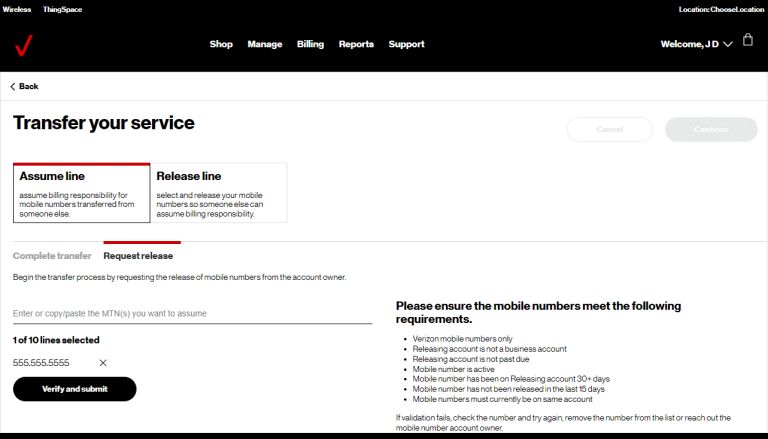Contents
Understanding Phone Bills
- What is a phone bill?
A phone bill is a detailed statement issued by a telecommunications provider, outlining the charges incurred for services rendered during a specific billing cycle. It typically includes information about voice calls, data usage, text messages, and any additional fees or taxes.
-
What information is included in a phone bill?
-
Call details: Date, time, duration, and phone numbers involved in voice calls.
-
Data usage: Total data consumed during the billing cycle, often categorized by network type (e.g., 3G, 4G, 5G).
-
Text messages: Number of text messages sent and received, but typically not the content of the messages.
-
Additional charges: Fees for international calls, roaming, premium services, or device installments.
-
Taxes and surcharges: Government-imposed taxes and fees applicable to telecommunications services.
Can You See Text Messages on Phone Bill? The Short Answer
No, you cannot typically see the actual content of text messages on a phone bill. Phone bills are designed to provide an overview of service usage and associated charges, not to reveal the content of private communications.
Why Text Message Content is Not Included
- Privacy Concerns: Telecommunications providers are bound by privacy regulations that restrict their ability to collect and store the content of text messages.
- Storage Limitations: Storing the content of every text message sent and received by millions of subscribers would require massive amounts of storage space and pose significant technical challenges.
- Data Security: Protecting the content of text messages from unauthorized access is crucial to maintaining user trust and preventing data breaches.
What Information About Text Messages is Included
While you cannot see the actual content of text messages, your phone bill might include the following information:
- Number of text messages: The total number of text messages sent and received during the billing cycle.
- Text messaging charges: If applicable, any charges associated with sending or receiving text messages, especially for international texting or premium services.
Exceptions and Circumstances
While the general rule is that text message content is not visible on phone bills, there might be exceptions and specific circumstances where this information could be accessed:
- Law enforcement requests: In certain legal investigations, law enforcement agencies may obtain a court order to access the content of text messages stored by telecommunications providers.
- Parental controls: Some parental control apps or services allow parents to monitor their children’s text messages, including the content.
- Company-owned devices: Employers may have policies that allow them to monitor text messages sent and received on company-owned devices.
Data Privacy Regulations
- The Importance of Data Privacy
Data privacy regulations play a crucial role in protecting individuals’ personal information, including the content of their communications. These regulations impose restrictions on how telecommunications providers and other entities can collect, store, and use personal data.
-
Key Data Privacy Regulations
-
General Data Protection Regulation (GDPR): The GDPR is a comprehensive data privacy regulation that applies to all organizations operating within the European Union or processing the personal data of EU citizens. It grants individuals significant control over their personal data, including the right to access, rectify, and erase their data.
-
California Consumer Privacy Act (CCPA): The CCPA is a state-level data privacy law that grants California residents certain rights regarding their personal information, including the right to know what personal information is being collected about them, the right to delete their personal information, and the right to opt-out of the sale of their personal information.
-
Other regional regulations: Various other countries and regions have their own data privacy regulations, such as the Personal Information Protection and Electronic Documents Act (PIPEDA) in Canada and the Privacy Act 1988 in Australia.
Technological Advancements and Privacy Concerns
- The Rise of Cloud Storage and Data Analytics
The increasing adoption of cloud storage and data analytics technologies has raised concerns about the potential for misuse of personal data. While these technologies offer numerous benefits, such as improved data accessibility and insights, they also pose risks to privacy if not properly managed and secured.
- The Role of Encryption
Encryption is a crucial tool for protecting the confidentiality of data, including text messages. By scrambling data into an unreadable format, encryption ensures that only authorized parties with the decryption key can access the original information.
- Balancing Innovation and Privacy
Striking the right balance between technological innovation and privacy protection is an ongoing challenge. As technology continues to evolve, it is essential to ensure that data privacy regulations and safeguards keep pace to prevent unauthorized access and misuse of personal information.
Tips for Protecting Your Privacy
- Use strong passwords and two-factor authentication: Protect your online accounts and devices with strong, unique passwords and enable two-factor authentication whenever possible.
- Be mindful of what you share online: Avoid sharing sensitive personal information on social media or other online platforms.
- Review privacy settings: Regularly review the privacy settings on your social media accounts and other online services to ensure that your information is being shared only with those you trust.
- Use secure messaging apps: Consider using messaging apps that offer end-to-end encryption to protect the content of your communications.
- Stay informed about data privacy regulations: Keep yourself updated on the latest data privacy regulations and how they affect your rights and protections.
Conclusion
In conclusion, while the actual content of text messages is generally not visible on phone bills, it is crucial to remain vigilant about protecting your privacy in an increasingly digital world. By understanding the limitations of phone bills, the importance of data privacy regulations, and the potential risks posed by technological advancements, you can take proactive steps to safeguard your personal information and maintain control over your communications.
Read More: Keeping Text Messages from Showing Up on Phone Bill iPhone: An Exclusive Guide






